Innovative Technologies in Island Battery Energy Storage
In the quest for sustainable and reliable energy solutions for islands, innovative technologies in island battery energy storage have emerged as crucial elements. Islands often face unique energy challenges due to their geographical isolation, reliance on imported fuels, and vulnerability to climate conditions. The exploration and application of advanced battery technologies offer promising prospects for addressing these issues and achieving energy independence and resilience.
One of the innovative technologies making waves in the field of island battery energy storage is the development of flow batteries. Flow batteries offer several advantages over traditional battery systems. They have the potential for large-scale energy storage due to their modular design, which allows for easy scalability. This is particularly important for islands with fluctuating energy demands and variable renewable energy sources such as wind and solar.
For instance, vanadium redox flow batteries have shown great potential. These batteries use vanadium ions in different oxidation states to store and release energy. The liquid electrolyte in these batteries can be easily replenished and maintained, extending the battery’s lifespan and reducing the overall cost of operation. In an island context, where long-term reliability is essential, the durability and scalability of flow batteries make them an attractive option.
Another emerging technology is the use of sodium-ion batteries. Sodium is abundant and widely available, making sodium-ion batteries potentially more cost-effective compared to lithium-ion batteries, which rely on limited lithium resources. Some sodium-ion batteries have demonstrated good performance in high-temperature and high-humidity environments, which are common in many island climates.
For example, on tropical islands where temperatures and humidity levels can be extreme, sodium-ion batteries could offer a more resilient energy storage solution. They are less prone to degradation under these conditions, ensuring a more stable and consistent power supply. This could be especially beneficial for critical infrastructure such as hospitals, water treatment plants, and communication systems that require uninterrupted power.
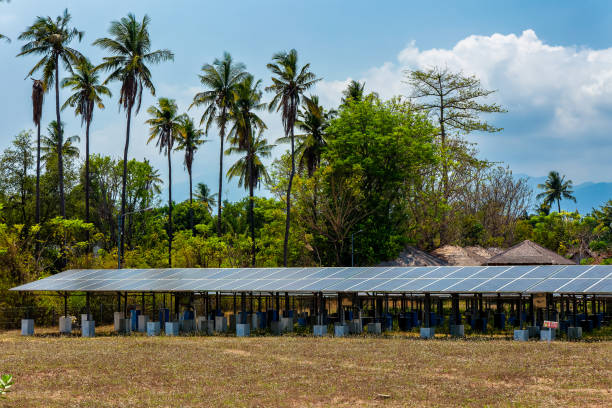
In addition to these specific battery technologies, improvements in battery management systems (BMS) are also playing a significant role. Advanced BMS can monitor and optimize the performance of the battery storage system in real-time. It can control the charging and discharging processes, balance the cells within the battery pack to ensure uniform performance, and predict potential faults or degradations.
On islands, where the energy infrastructure is often more compact and critical, an efficient BMS is essential for maximizing the lifespan and performance of the battery storage system. It can also integrate with other components of the island’s energy system, such as renewable energy generators and the grid, to ensure seamless operation and efficient energy distribution.
Energy harvesting technologies are also being integrated with island battery storage systems. This includes piezoelectric materials that generate electricity from mechanical vibrations or pressure, and thermoelectric devices that convert heat into electricity. These additional sources of energy can contribute to the charging of the battery storage, increasing the overall efficiency and self-sufficiency of the island’s energy system.
Furthermore, the development of solid-state batteries holds great promise for island applications. Solid-state batteries use a solid electrolyte instead of a liquid one, offering improved safety, higher energy density, and longer cycle life. They are less likely to leak or catch fire, making them suitable for the challenging island environments where safety is of paramount importance.
However, the implementation of these innovative technologies in island battery energy storage comes with its own set of challenges. The initial investment cost can be significant, requiring careful financial planning and potentially the support of government subsidies or private investment. Infrastructure for manufacturing and recycling these batteries may also need to be developed or enhanced on islands to ensure a sustainable supply chain.
Despite these challenges, the potential benefits of innovative technologies in island battery energy storage are too significant to ignore. Islands have the opportunity to become showcases for sustainable energy solutions, demonstrating the effectiveness of these technologies and inspiring wider adoption globally.
Case studies from around the world provide evidence of successful implementation. For instance, a small island in the Pacific has implemented a combination of flow batteries and sodium-ion batteries, along with an advanced BMS and energy harvesting technologies. This has led to a significant reduction in reliance on diesel generators, lower energy costs, and a more stable and sustainable energy supply.
In conclusion, the exploration and adoption of innovative technologies in island battery energy storage are essential steps towards a more sustainable and resilient energy future for islands. Continued research and development, along with strategic partnerships and policy support, will be key to unlocking the full potential of these technologies and transforming the energy landscape of islands worldwide.
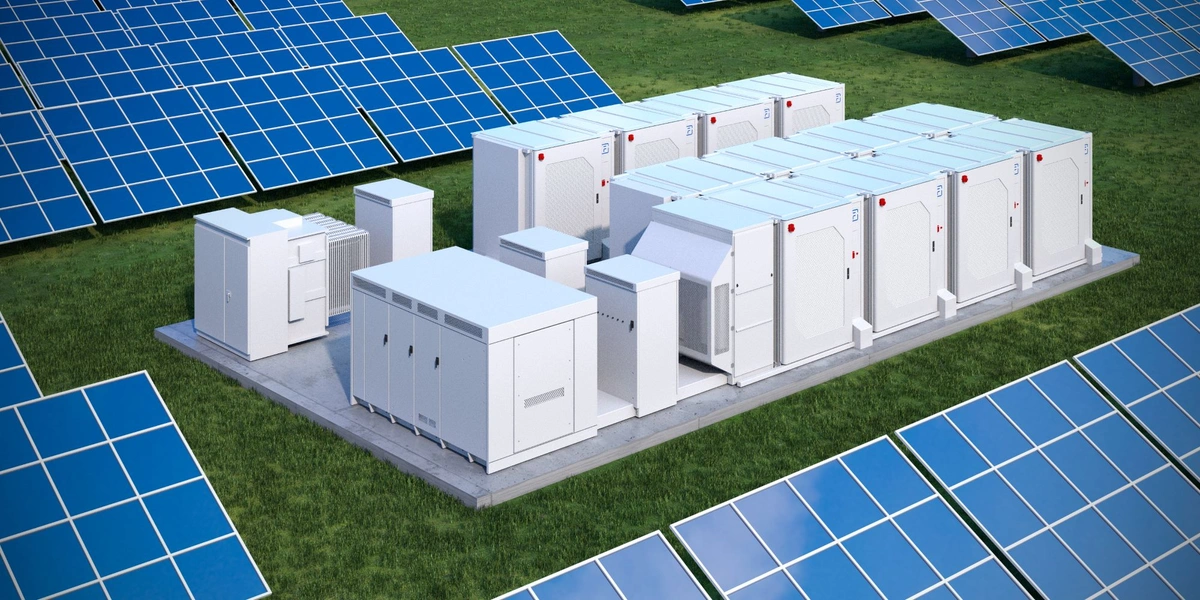
Introduction
Islands, with their unique geographical constraints and reliance on imported fossil fuels, face significant challenges in meeting their energy needs sustainably. However, the integration of solar energy storage systems presents a transformative opportunity to convert these challenges into advantages. This article explores how solar energy storage technologies can revolutionize energy sustainability on islands, providing economic, environmental, and social benefits.
Current Energy Challenges on Islands
Islands typically rely heavily on imported fossil fuels for electricity generation, leading to high costs and vulnerability to price fluctuations. Moreover, the logistics of fuel transportation can be complex and costly, especially for remote islands. These factors contribute to energy insecurity and inhibit economic development.
The Role of Solar Energy
Solar energy offers islands a clean, renewable alternative to traditional fossil fuels. With abundant sunshine throughout the year, islands are ideally suited for solar power generation. Photovoltaic (PV) systems harness sunlight and convert it into electricity, offering a reliable and sustainable energy source.
Integrating Energy Storage Systems
One of the key challenges of solar power is its intermittent nature, as energy generation depends on sunlight availability. Energy storage systems address this issue by storing excess energy generated during peak sunlight hours for use during periods of low or no sunlight. Battery storage technologies, such as lithium-ion batteries, are increasingly efficient and cost-effective, enabling islands to achieve greater energy independence and stability.
Advantages of Solar Energy Storage on Islands
Energy Security: By reducing reliance on imported fossil fuels, islands enhance their energy security and resilience to external supply disruptions.
Cost Savings: Solar energy storage systems can lower electricity costs over time by reducing fuel imports and operational expenses associated with traditional power generation.
Environmental Benefits: Solar power produces zero greenhouse gas emissions during operation, contributing to cleaner air and mitigating climate change impacts.
Community Benefits: Local employment opportunities arise from the installation, maintenance, and operation of solar energy systems, stimulating economic growth and fostering community engagement.
Case Studies and Success Stories
Numerous islands worldwide have already implemented successful solar energy storage projects. For instance, the island of Ta’u in American Samoa now operates almost entirely on solar power, supported by Tesla’s Powerpack battery storage system. This initiative has significantly reduced diesel fuel imports and provided reliable electricity to the island’s residents.
Similarly, the Hawaiian islands have made substantial investments in solar energy and storage technologies, aiming to achieve 100% renewable energy targets by 2045. These efforts demonstrate the feasibility and benefits of transitioning to sustainable energy sources on islands.
Challenges and Considerations
While solar energy storage holds immense promise, several challenges must be addressed for widespread adoption. These include initial investment costs, technological advancements in battery storage, regulatory frameworks, and integration with existing energy infrastructure. Governments, private sector entities, and international organizations play crucial roles in overcoming these barriers through policy support, funding mechanisms, and capacity building.
Conclusion
In conclusion, “Island Solar Energy Storage: Turning Challenges into Advantages” highlights the transformative potential of solar energy storage technologies for islands worldwide. By harnessing abundant sunlight and integrating efficient energy storage systems, islands can enhance energy security, reduce costs, and mitigate environmental impacts. As global momentum shifts towards sustainable development and climate resilience, investing in solar energy storage represents a pivotal step towards a cleaner and more prosperous future for island communities.
Contact us
- Email:[email protected]
- Tel: +86 13651638099
- Address: 333 Fengcun Road, Fengxian District, Shanghai
Get A Quote Now!
Related product links are available directly
Site storage products:Site storage products 归档 – (energystoragecontainer.com)
Lithium Battery:Lithium Battery 归档 – (energystoragecontainer.com)
Read more
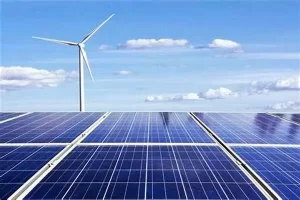
Unveiling Photovoltaic+Energy Storage: Four Major Application Scenarios Leading the Future of Energy
In this way, the energy landscape is evolving, and one of the most thrilling developments in renewables is the integration of photovoltaics energy storage.
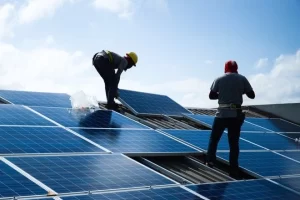
From Theory to Practice: Four Methods for Estimating Photovoltaic Power Generation
Photovoltaic power generation has become an essential part of modern energy solutions, particularly in home solar systems and distributed power applications

Rack-Mounted Lithium Iron Batteries: Creating Efficient and Reliable Energy Storage Solutions
When it comes to modern energy solutions, rack-mounted lithium iron batteries are taking center stage in a variety of industries. Whether you’re powering data centers, stabilizing energy for households, or keeping critical systems online at 5G base stations, these batteries have become the unsung heroes of our electrified world.
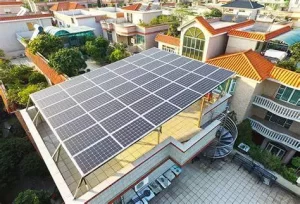
Late Night Energy Saving Tips: How to Maximize Electricity Savings During Off-Peak Hours
With rising energy costs, homeowners are increasingly exploring innovative ways to save on their electricity bills. One effective approach is utilizing off-peak hours—times when electricity rates are significantly lower due to reduced demand.
